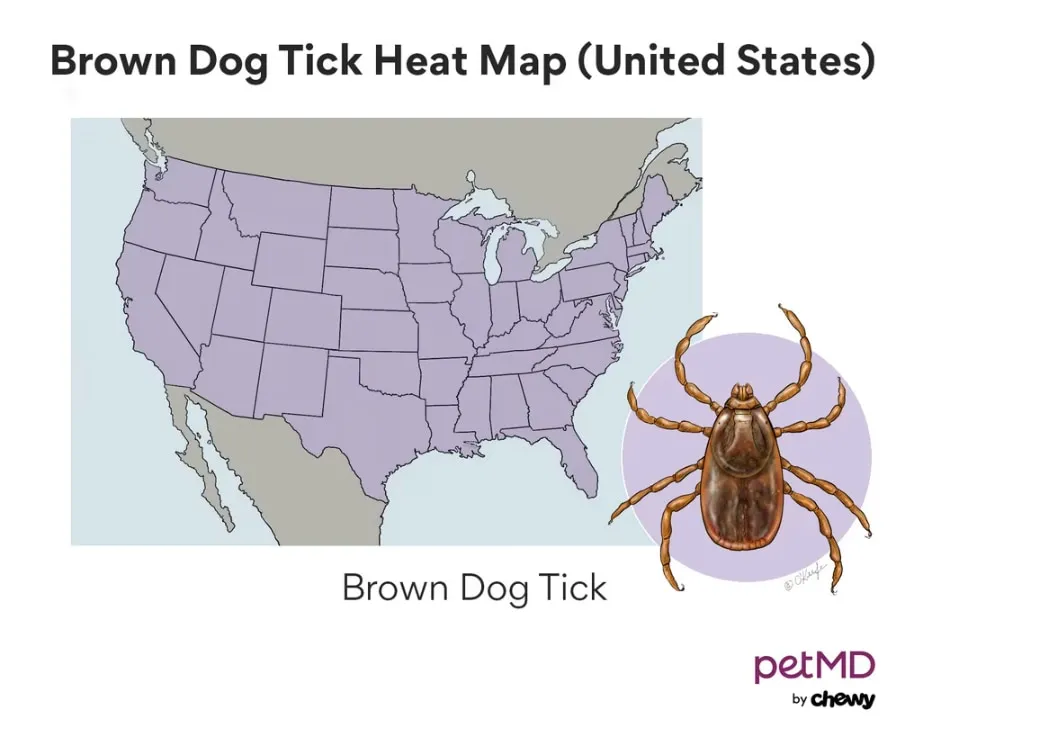Keeping your canine companion protected from fleas and ticks is a cornerstone of preventative care, ensuring their health and happiness. Ectoparasites like fleas and ticks not only cause immediate discomfort but can also transmit serious diseases. Understanding the best Chewable Flea And Tick Medication For Dogs is crucial for effective and convenient protection. This guide explores why prevention is vital, when to start, and how to choose the right medication, with a focus on the popular chewable options.
Preventative care is a key part of keeping your dog healthy and happy—and one of the best ways you can prevent potential health issues is to use monthly flea and tick preventatives.
Why Flea and Tick Prevention is Crucial for Dogs
Fleas and ticks are external parasites that require a host’s blood to survive. Their bites can lead to a cascade of health problems for your dog, including severe allergic reactions, dermatitis, anemia, and persistent itching. In more severe cases, these bites can cause infections, abscesses, paralysis, and even be fatal.
Beyond the direct impact of bites, these parasites are notorious carriers of a range of diseases. Common tick-borne illnesses include Lyme disease, Rocky Mountain spotted fever, ehrlichiosis, and anaplasmosis, among others. Fleas can transmit tapeworms and bacterial infections. Alarmingly, some of these diseases are zoonotic, meaning they can spread from pets to humans, making proactive prevention a public health concern. Utilizing effective flea and tick treatments is not just about your dog’s well-being; it’s about safeguarding your entire household.
When Should Dogs Be on Flea and Tick Prevention?
Fleas and ticks are remarkably resilient and can survive in a wide variety of climates and environments. Given the significant health risks they pose and their potential to transmit diseases to both pets and people, consistent prevention is essential. It is recommended to begin flea and tick prevention for your dog as early as 8 weeks of age. This protection should be maintained year-round, throughout your dog’s entire life, regardless of the season or your geographical location.
Choosing the Right Chewable Flea and Tick Medication for Dogs
The market offers a diverse array of products designed to keep your dog free from these pesky parasites. These options generally fall into categories like pesticides, repellents, or growth inhibitors, each targeting pests at different stages of their life cycle to prevent infestations.
While some products are designed to combat only one type of parasite (often fleas), combination chewable flea and tick medication for dogs contains multiple active ingredients to effectively combat various pests. Many of these advanced formulas also offer additional protection against other health threats such as heartworms, skin and ear mites, and intestinal parasites.
For instance, products like Credelio Quattro offer comprehensive parasite protection, covering six types of parasites: fleas, ticks, heartworms, roundworms, hookworms, and tapeworms.
 A dog happily taking a chewable medication
A dog happily taking a chewable medication
Before selecting any medication, always consult with your veterinarian. They can help you determine the most suitable option for your specific dog. When reviewing product information and discussing with your vet, ensure the following points are addressed:
- Species Appropriateness: Confirm the product is formulated for dogs, not cats, as many ingredients are toxic to felines.
- Weight Range: Verify the medication is appropriate for your dog’s current weight.
- Parasite Coverage: Ensure it protects against the parasites prevalent in your area.
- Administration: Understand if it should be given with food.
- Dosage Frequency: Know how often to administer the medication.
- Efficacy Timeline: Determine when the product starts working and how long protection lasts.
- Bathing Guidelines: Clarify when your dog can be bathed after application.
- Safety Concerns: Be aware of potential side effects and what to do in case of an adverse reaction.
Key Factors to Consider When Selecting Chewable Flea and Tick Medication:
1. Application Method
Chewable flea and tick medication for dogs offers a convenient oral administration. This is an excellent choice for owners of picky eaters or dogs with sensitive stomachs who might resist topical applications. Administering a chewable tablet is often as simple as giving a treat. It’s important, however, to monitor your dog to ensure they consume the entire tablet and do not vomit it before it can be absorbed into their system. This contrasts with topical treatments, which are applied to the skin. While topical options can be effective, they require careful handling to prevent children or other pets from touching or licking the application site before it dries. They may also be less ideal for dogs that swim frequently or require regular baths, as water exposure can diminish their effectiveness.
2. Geographical Location and Local Parasite Populations
The prevalence of fleas and ticks varies significantly by region. The Companion Animal Parasite Council (CAPC) is an invaluable resource for identifying the specific parasites active in your area. This information is crucial for selecting a chewable flea and tick medication for dogs that provides targeted protection against local threats.
 Close-up of a tick on a dog's fur
Close-up of a tick on a dog's fur
3. Dog’s Lifestyle and Outdoor Access
Consider the environments your dog frequents. Parks, hiking trails, wooded areas, and even your backyard can be habitats for fleas and ticks. Dogs that spend extensive time in these areas or interact frequently with other animals are at a higher risk of exposure. However, it’s important to remember that fleas can easily be brought indoors on clothing, other pets, or even through window screens. Therefore, veterinarians generally recommend year-round prevention for all dogs, regardless of their outdoor activity level.
4. MDR-1 Gene Mutation
Certain breeds, including Collies, Australian Shepherds, and Shetland Sheepdogs, may carry a gene mutation known as MDR-1. This mutation affects their ability to metabolize certain medications, potentially leading to adverse reactions. Veterinarians often recommend genetic testing for these breeds. Many manufacturers of flea and tick preventatives have conducted safety testing on dogs with the MDR-1 mutation, and their products have shown no adverse effects. However, it’s always wise to discuss this with your veterinarian, especially if your dog belongs to an at-risk breed.
5. Life Stage and Size
For puppies and small dog breeds, selecting the correct dosage is paramount. Most chewable flea and tick medication for dogs has a minimum age requirement of 8 weeks, but always check the product packaging for specific guidelines. Some formulations are specifically designed for younger puppies and can be used as early as 6 weeks of age. Your veterinarian will guide you in choosing a product that is safe and effective for your dog’s age and weight.
6. Medical Conditions
Certain classes of flea and tick preventatives, particularly those in the isoxazoline drug class, should be used with caution in dogs with a history of seizures or neurological disorders. These medications may increase the risk of breakthrough seizures in susceptible dogs. It is also crucial to consult your veterinarian before administering any preventative if your dog:
- Has a history of allergic reactions to medications.
- Is currently ill or significantly underweight.
- Is pregnant, nursing, or intended for breeding.
Over-the-Counter vs. Prescription Flea and Tick Medication
Flea and tick preventatives are available in both over-the-counter (OTC) and prescription formats.
Over-the-Counter (OTC) Flea and Tick Products
OTC products do not require a veterinarian’s prescription and are readily available online and in many retail pet stores. While convenient, it is still highly recommended to consult your veterinarian to ensure the chosen OTC product is safe and appropriate for your pet’s specific needs.
Prescription Flea and Tick Products
Prescription medications require a prescription from your veterinarian. While they may be slightly more expensive, they are generally considered more effective and safer for your dog. Most veterinarians recommend prescription-grade products due to their rigorous testing and proven efficacy.
Popular Chewable Flea and Tick Prevention Options
Several reputable brands offer effective chewable flea and tick medication for dogs. Here are some commonly recommended options:
Bravecto
Bravecto is available as a chewable tablet or a topical solution, containing the active ingredient fluralaner. It belongs to the isoxazoline drug class. Bravecto is known for its fast-acting nature, eliminating fleas within two hours and ticks within 12 hours. It also demonstrates effectiveness against demodectic and sarcoptic mange, as well as ear mites. Due to its isoxazoline classification, Bravecto should be used with caution in dogs with a history of seizures, epilepsy, or other neurological disorders.
Comfortis
Comfortis is a chewable tablet formulation that utilizes the active ingredient spinosad. This product is solely effective against fleas and is known for its rapid action, killing fleas within 30 minutes of administration. Dogs and puppies must be at least 14 weeks old and weigh over 5 pounds to use Comfortis, which is typically administered monthly.
Credelio
Credelio is a chewable tablet containing lotilaner, another active ingredient from the isoxazoline drug class. It effectively treats both fleas and ticks and begins to kill fleas within four hours of administration. This product is approved for dogs and puppies over 8 weeks old and weighing more than 4.4 pounds. As with other isoxazoline medications, caution is advised for dogs with a history of seizures or neurological conditions.
Credelio Quattro
Building on the efficacy of Credelio, Credelio Quattro is a comprehensive chewable tablet. It contains lotilaner for flea and tick control, along with moxidectin (for heartworms, hookworms, and roundworms), praziquantel (for tapeworms), and pyrantel (for hookworms and roundworms). Administered monthly, Credelio Quattro is suitable for dogs and puppies 8 weeks and older, weighing at least 3.3 pounds.
 A close-up of a chewable flea and tick medication tablet
A close-up of a chewable flea and tick medication tablet
NexGard
NexGard is a popular chewable tablet featuring afoxolaner, an isoxazoline active ingredient. It provides broad-spectrum protection against fleas and various tick species, including deer ticks, American dog ticks, brown ticks, and Lone Star ticks. NexGard is also used off-label for the treatment of sarcoptic and demodectic mange. It begins killing fleas within four hours and ticks within 48 hours. The monthly product is indicated for dogs and puppies over 8 weeks old and weighing more than 4 pounds. Owners should exercise caution if their dog has a history of neurological issues.
Simparica Trio
Simparica Trio is a once-monthly chewable tablet that offers protection against fleas, ticks, roundworms, and hookworms, while also preventing heartworm disease. Its active ingredients include sarolaner (an isoxazoline), moxidectin, and pyrantel. It is also used off-label for treating demodectic mange, sarcoptic mange, and ear mites. Simparica Trio starts killing fleas and ticks within 12 hours and is approved for dogs and puppies over 8 weeks old, weighing at least 2.8 pounds. Due to the sarolaner component, caution is advised for dogs with seizure history.
Trifexis
Trifexis is a chewable tablet containing spinosad and milbemycin oxime. It is effective against fleas, hookworms, roundworms, and whipworms, and also prevents heartworm disease. Trifexis is fast-acting, beginning to kill fleas within 30 minutes. However, it does not provide protection against ticks. This product is suitable for dogs and puppies 8 weeks or older, weighing over 5 pounds.
Conclusion: Prioritizing Your Dog’s Health with Chewable Medication
Choosing the right chewable flea and tick medication for dogs is a vital step in maintaining their overall health and well-being. These convenient oral treatments offer a straightforward way to protect your canine companion from the multitude of dangers posed by fleas and ticks. Always consult with your veterinarian to discuss your dog’s specific needs, lifestyle, and medical history to ensure you select the safest and most effective preventative care plan.
References
- PetMD. (n.d.). Best Flea & Tick Medications for Dogs.
- Companion Animal Parasite Council (CAPC). (n.d.). Parasite Prevalence Maps.
- PetMD. (n.d.). MDR-1 Gene in Dogs.
- PetMD. (n.d.). Dog Flea and Tick Prevention and Treatment.
